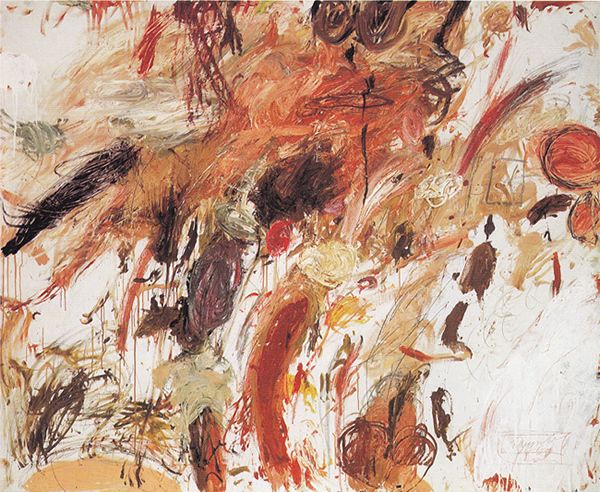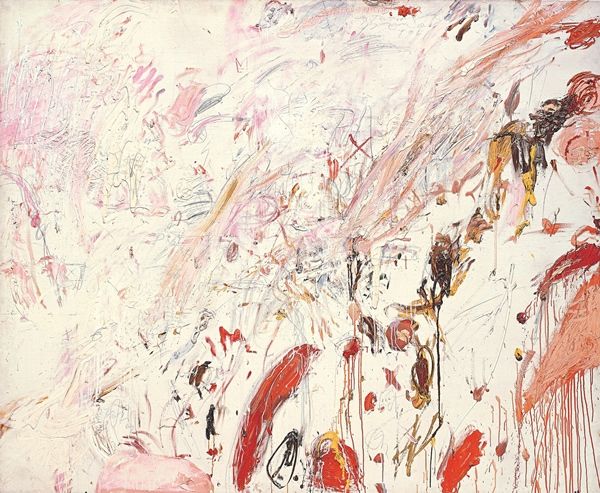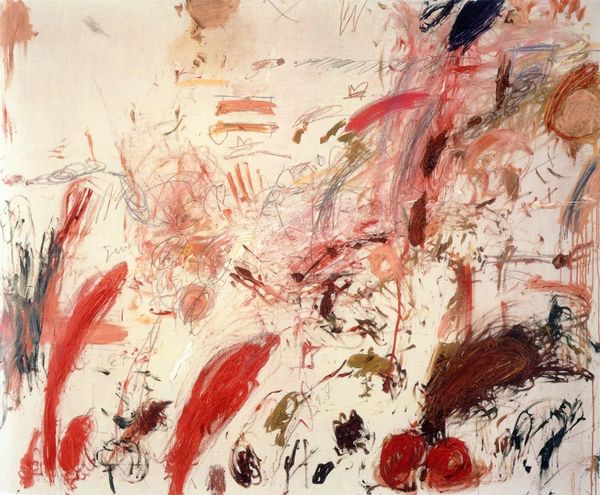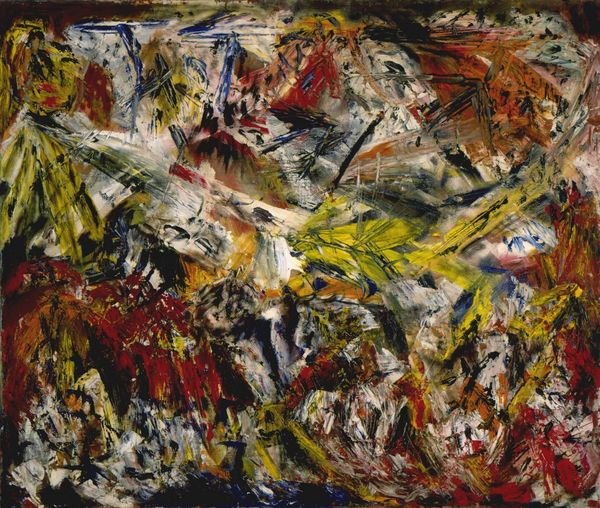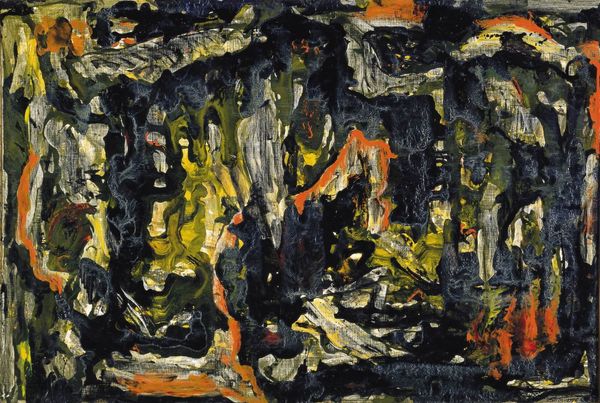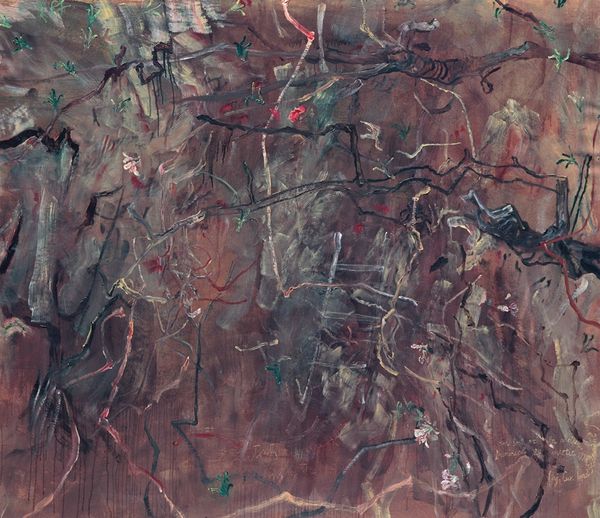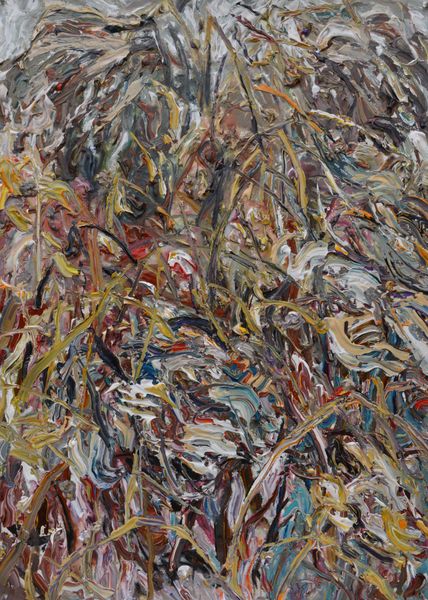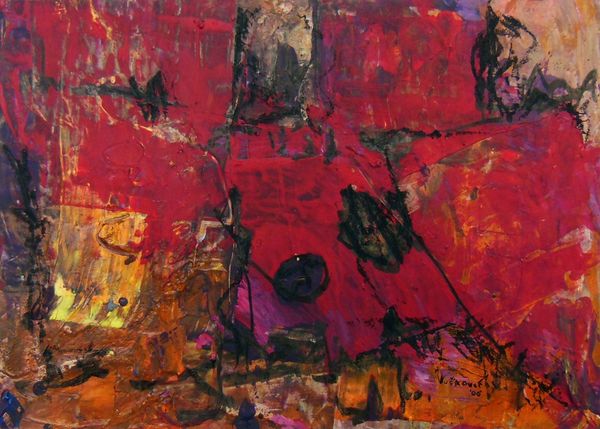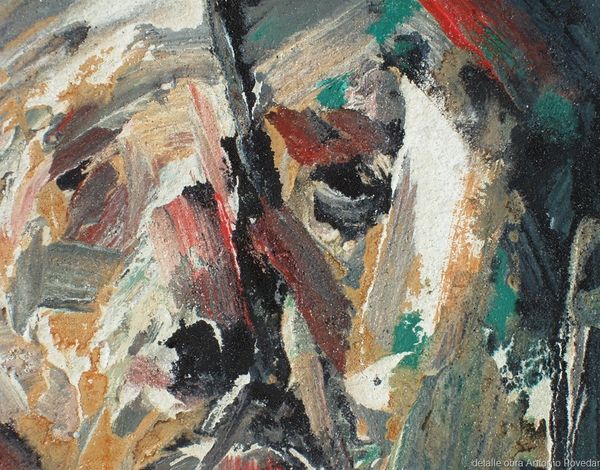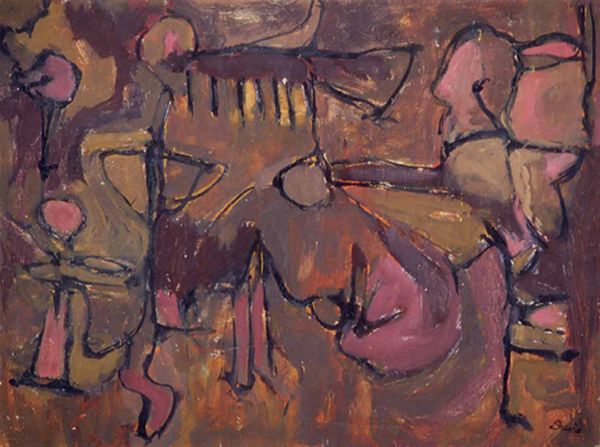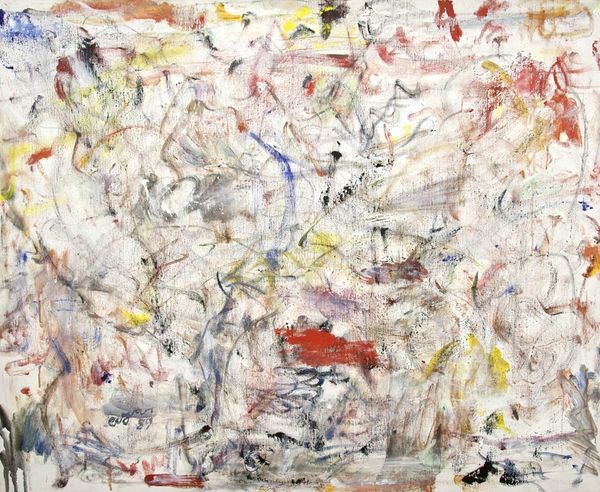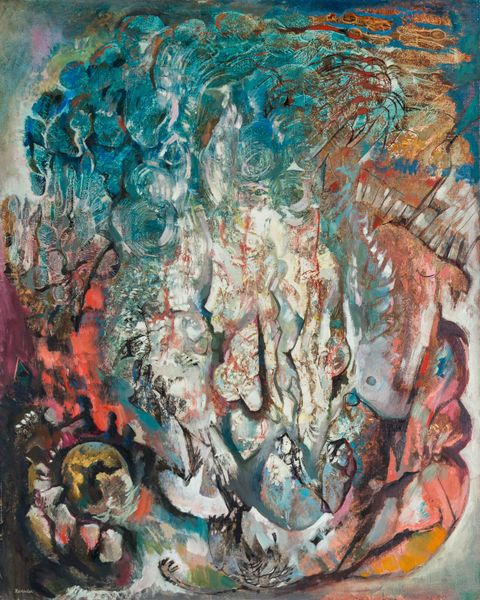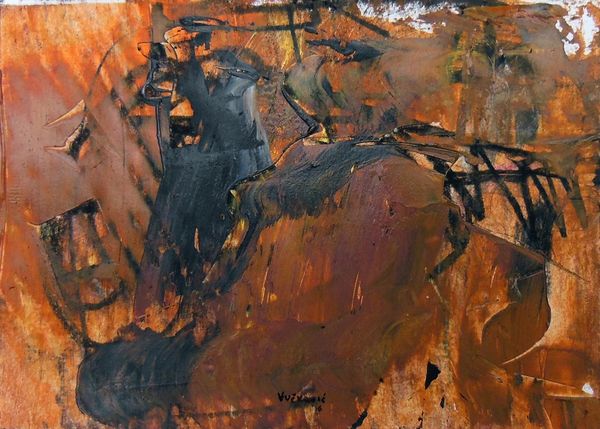
Dimensions: support: 1302 x 1956 mm frame: 1318 x 1975 x 59 mm
Copyright: © ADAGP, Paris and DACS, London 2014 | CC-BY-NC-ND 4.0 DEED, Photo: Tate
Editor: Jean Dubuffet’s painting, "The Busy Life," is a large, energetic canvas. I’m struck by the chaotic imagery and the earthy palette. What symbols do you see at play here? Curator: The rawness of Dubuffet’s style evokes primal urges and societal structures, almost like cave paintings. Notice how the figures blend into the landscape? It speaks to an interconnectedness, the individual consumed by the collective "busy life." Editor: So, you are suggesting that the indistinct figures are symbols of collective experience? Curator: Precisely. Think of how abstract forms can hold deeply ingrained cultural meanings. The repeated shapes, the almost frantic energy… it mirrors the relentless pace of modern existence. Editor: It definitely gives me a new perspective on how abstract forms can represent cultural anxieties. Curator: It makes you wonder what symbols future generations will find in our art.
Comments
Join the conversation
Join millions of artists and users on Artera today and experience the ultimate creative platform.
tate 7 months ago
⋮
This work belongs to a series that Dubuffet called ‘beaten pastes’ because the main paint layer resembled butter, into which he scratched the graffiti-like figures. He wrote ‘I am at a loss to explain just what it was in these paintings that gave me - that still gives me - such a keen satisfaction. It probably has something to do with the physical pleasure derived from spreading freely, with a large spatula as broad as one’s hand, this beautiful white paste... then letting the long knife wander over the smooth paste, tracing with such perfect ease graffiti of sonorous colours.’ Gallery label, November 2005
